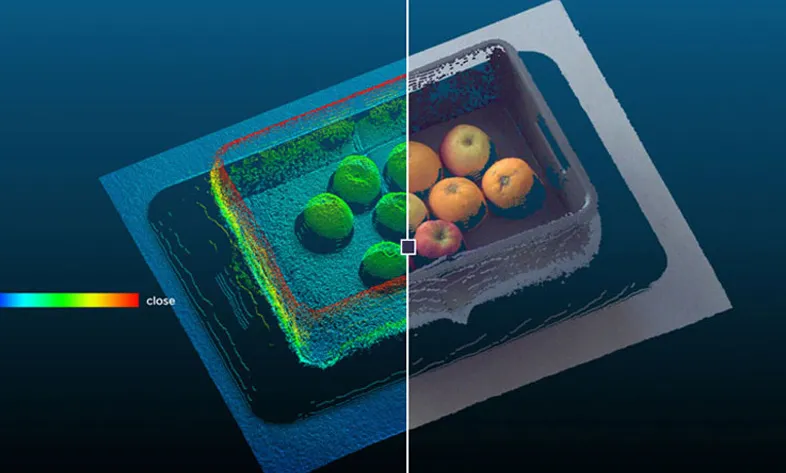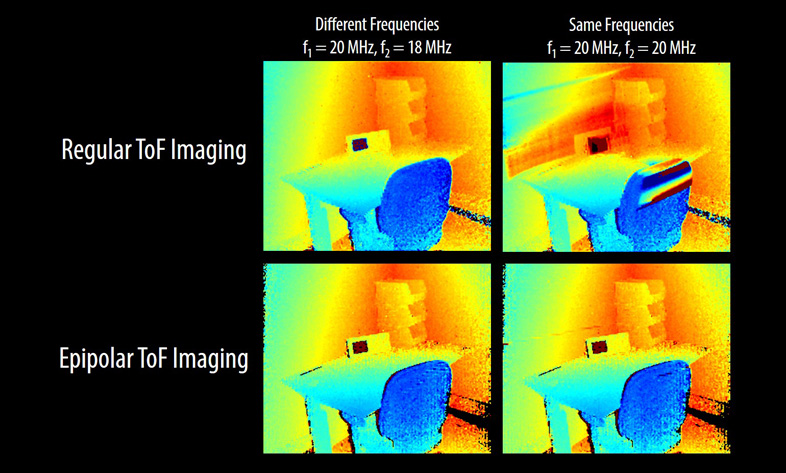What are Time-of-Flight (TOF Camera) Depth Sensors?
What are Time-of-Flight (TOF Camera) depth sensors? Learn their principles, applications, advanced technologies, and challenges in various industries.
If you have any questions, ask!

What are Time-of-Flight (TOF Camera) depth sensors? Learn their principles, applications, advanced technologies, and challenges in various industries.
Time-of-Flight (TOF Camera) depth sensors are an advanced technology for measuring distance and environmental depth, providing accurate information about the surrounding environment using light pulses.
This technology, with high accuracy and speed, is applied in various industries including automotive, robotics, healthcare, and architecture.
One of the main advantages of TOF Cameras is their ability to operate under different lighting conditions. Unlike traditional cameras, these devices measure distances using their own light source and can perform accurately in both dark and bright environments.
The high-speed data processing also allows real-time applications. With technological advances, TOF applications have expanded to motion detection, object tracking, virtual and augmented reality, and even heartbeat measurement.
This article provides a comprehensive review of TOF Cameras, their principles, applications, comparison with other technologies, advanced features, and challenges in various industries.
Time-of-Flight (TOF Camera) depth sensors are modern technology for measuring distance and creating 3D models of the environment. They calculate the precise distance of objects by sending light pulses and measuring their return time.
This technology is not only used in advanced automotive and robotics industries but also in healthcare, architecture, video games, and virtual reality.
The high accuracy and speed of TOF Cameras have made them a replacement for traditional depth measurement methods. This article aims to fully introduce TOF Cameras, explain their principles, review applications, advantages, limitations, and present the latest developments and challenges.
Reading this article provides a comprehensive and practical understanding of TOF technology.
TOF Cameras calculate the distance between the camera and objects by sending light pulses to the surroundings and measuring the return time. This method allows precise measurement of both short and long distances and is not dependent on ambient light like traditional cameras.
Each light pulse is sent from the camera to the target and reflects back upon hitting the surface. By calculating the time taken for the light to return, the device determines the exact distance to objects.
In addition to light reflection, TOF data and image processing algorithms help generate accurate 3D models of the environment. These features make TOF Cameras suitable for applications requiring high speed and accuracy, including autonomous vehicles, augmented reality, and robotics.
In the automotive industry, TOF Cameras help vehicles detect obstacles and accurately determine distances to other objects. This information is critical for driver safety and reducing collision risks, playing an essential role in autonomous vehicle development.
In robotics and artificial intelligence, TOF Cameras allow robots to precisely analyze their surroundings and make intelligent decisions. Additionally, in gaming and virtual reality, this technology provides a more realistic user experience.
In healthcare and dentistry, TOF Cameras enable precise measurement of surgical depths and tissue distances, preventing damage to sensitive areas. Moreover, in architecture and construction, this technology assists in accurately measuring spaces and structural dimensions.
TOF Cameras offer distinct advantages over image-based and laser-based technologies. High-speed measurement and accuracy under different lighting conditions are among the main benefits. Image-based systems are often dependent on ambient light and have slower measurement speeds.
Compared to laser-based technologies, TOF Cameras are more cost-effective and compact while maintaining suitable accuracy for many applications. This makes TOF a practical and economical choice for various industries.
TOF’s ability to measure long distances is another advantage, especially important in autonomous vehicles and robotics. These features make TOF Cameras superior in many industrial and research applications.

With technological advancements, TOF Cameras provide more capabilities, including motion detection, object tracking, facial recognition, and even heartbeat measurement. These features increase the technology’s applicability in intelligent systems.
Moreover, TOF depth sensors consume less power and perform better under different lighting conditions. Their high accuracy compared to traditional methods makes them a suitable replacement for older, less precise technologies.
This technology is rapidly improving, and it is expected to play an important role in developing automotive, robotics, healthcare, video games, and architectural systems, enhancing overall system performance.
While TOF Cameras provide numerous advantages across industries, they also face certain challenges. One of the main issues is sensitivity to ambient light. Significant light changes can reduce measurement accuracy and limit TOF performance in some conditions.
Interference with other devices is another concern. Placing two TOF devices close to each other can cause reduced accuracy and data interference, requiring proper environment management and precise settings.
Additionally, technical limitations, such as operating distance and specific environmental conditions, can affect TOF performance. However, ongoing technological development and research are expected to reduce these limitations in the future.
What is a TOF Camera and how does it work?
A TOF Camera (Time-of-Flight depth sensor) sends light pulses and measures their return time to calculate the distance and depth of objects, providing a 3D map of the environment.
What are the main applications of TOF Cameras?
This technology is used in automotive, robotics, healthcare, virtual reality, and gaming, helping accurately detect obstacles, measure distances, and model environments.
What are the advantages of TOF compared to other technologies?
TOF offers high accuracy, fast speed, operation under varying lighting conditions, and the ability to measure long distances, while other technologies have limitations in these areas.
What challenges exist in using TOF Cameras?
Challenges include sensitivity to ambient light, interference with other devices, and technical limitations, which are expected to decrease with further technological development.
Source » itroz Academy


Follow the guide to set up your domain email on any device or OS, including both smartphones and computers, quickly and easily.

This guide is useful for automatically forwarding your website emails set up on your domain to other email accounts, such as Gmail and others.

Step-by-step guide to install Thunderbird on macOS; download, setup, and manage multiple email accounts easily and efficiently.
Comments (0)